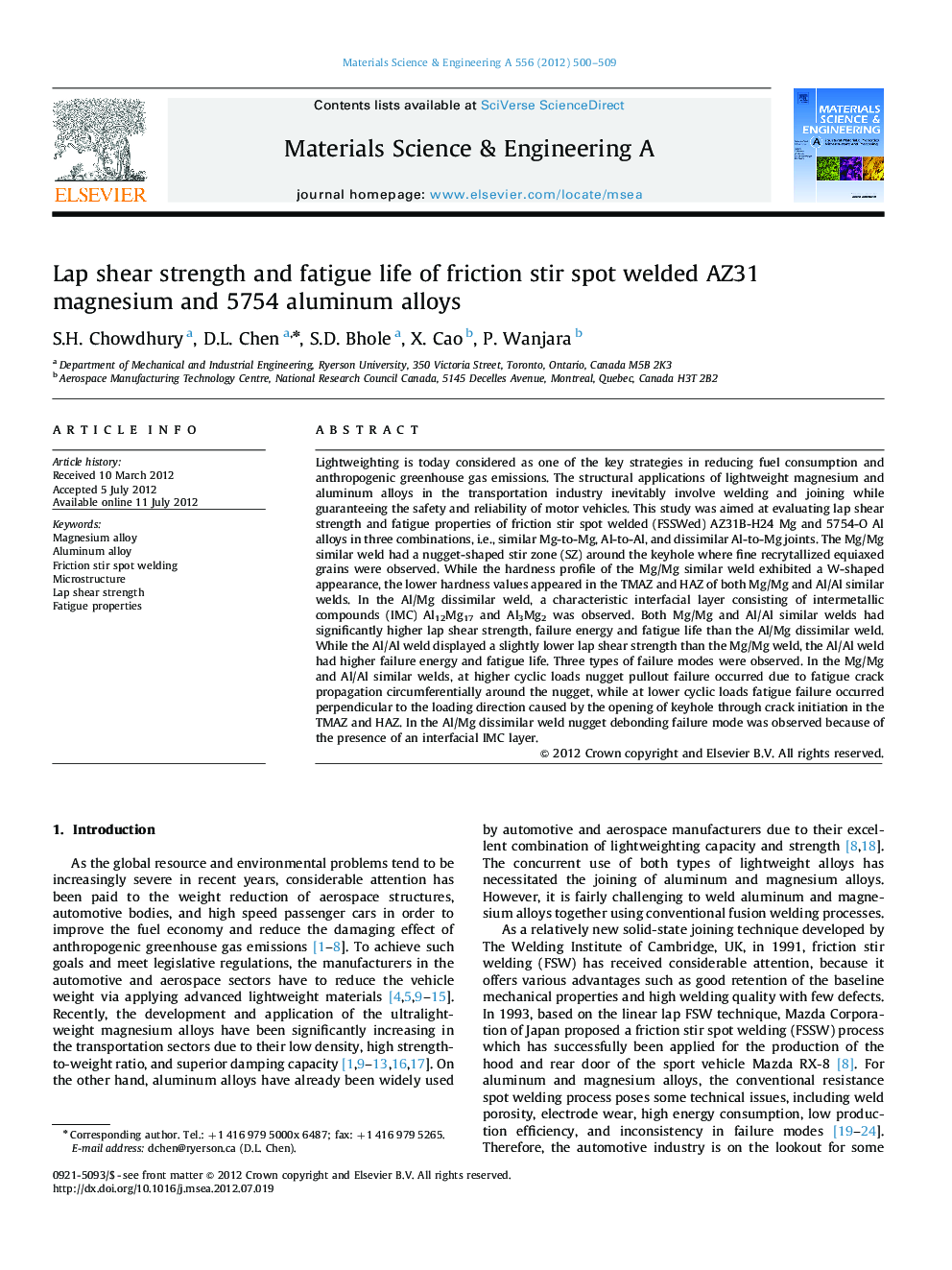| کد مقاله | کد نشریه | سال انتشار | مقاله انگلیسی | نسخه تمام متن |
|---|---|---|---|---|
| 1577084 | 1514787 | 2012 | 10 صفحه PDF | دانلود رایگان |

Lightweighting is today considered as one of the key strategies in reducing fuel consumption and anthropogenic greenhouse gas emissions. The structural applications of lightweight magnesium and aluminum alloys in the transportation industry inevitably involve welding and joining while guaranteeing the safety and reliability of motor vehicles. This study was aimed at evaluating lap shear strength and fatigue properties of friction stir spot welded (FSSWed) AZ31B-H24 Mg and 5754-O Al alloys in three combinations, i.e., similar Mg-to-Mg, Al-to-Al, and dissimilar Al-to-Mg joints. The Mg/Mg similar weld had a nugget-shaped stir zone (SZ) around the keyhole where fine recrytallized equiaxed grains were observed. While the hardness profile of the Mg/Mg similar weld exhibited a W-shaped appearance, the lower hardness values appeared in the TMAZ and HAZ of both Mg/Mg and Al/Al similar welds. In the Al/Mg dissimilar weld, a characteristic interfacial layer consisting of intermetallic compounds (IMC) Al12Mg17 and Al3Mg2 was observed. Both Mg/Mg and Al/Al similar welds had significantly higher lap shear strength, failure energy and fatigue life than the Al/Mg dissimilar weld. While the Al/Al weld displayed a slightly lower lap shear strength than the Mg/Mg weld, the Al/Al weld had higher failure energy and fatigue life. Three types of failure modes were observed. In the Mg/Mg and Al/Al similar welds, at higher cyclic loads nugget pullout failure occurred due to fatigue crack propagation circumferentially around the nugget, while at lower cyclic loads fatigue failure occurred perpendicular to the loading direction caused by the opening of keyhole through crack initiation in the TMAZ and HAZ. In the Al/Mg dissimilar weld nugget debonding failure mode was observed because of the presence of an interfacial IMC layer.
Journal: Materials Science and Engineering: A - Volume 556, 30 October 2012, Pages 500–509